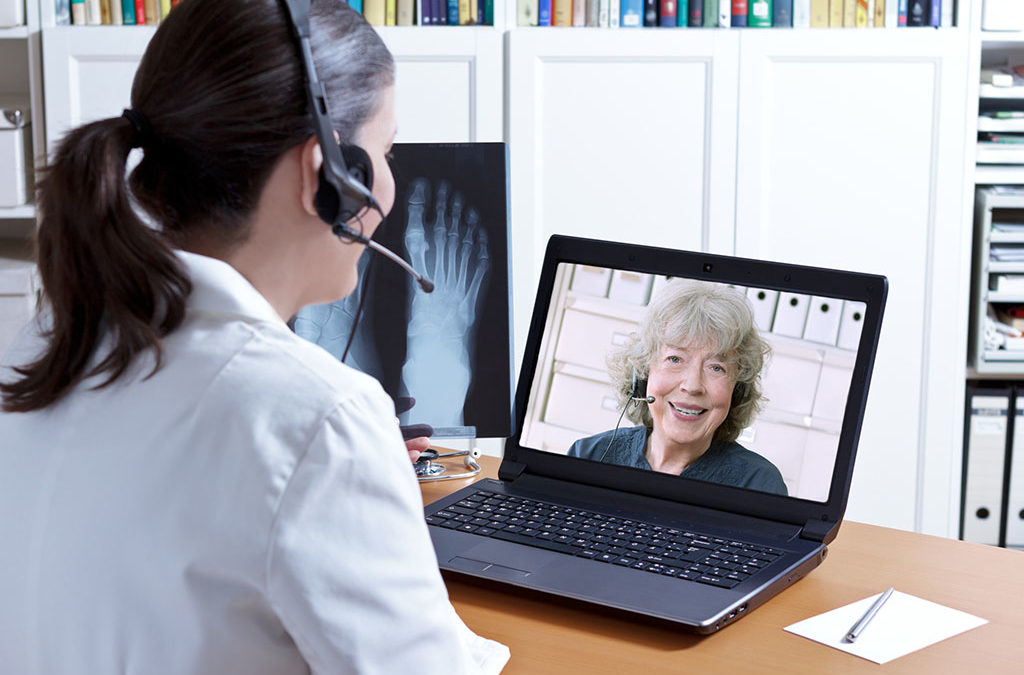The Future of Telemedicine
Telemedicine is a groundbreaking advancement that is changing healthcare as we know it. With entire industries and ways of life mired with uncertainty, telemedicine shapes up to provide solutions. Here’s what you should know about the future of telemedicine.
The COVID-19 pandemic is pushing our medical system to the limits, and testing it (and us) like never before. And no one knows when the pandemic will be over, how the world will look after, and what will become our new ‘normal’.
The increased hospitalizations, isolation, and physical distancing are adding more barriers to getting the proper medical care. As our need for accessible medical care increases, telemedicine services are becoming an increasingly important tool for our medical care. And we’ll probably continue to see telemedicine grow after COVID-19, as well.
What is Telemedicine?
Telemedicine lets doctors and patients complete their appointments virtually, rather than in person. Telemedicine services use software that allows doctors and their patients to connect online.
They can instant-message each other, have face-to-face video calls, and can even send important documents electronically to the patient. It’s also becoming more common for prescriptions to be written totally online, and delivered right to your doorstep!
The beauty of telemedicine services are that it doesn’t cost the patient extra money to see a doctor online, and doesn’t involve confusing or expensive technology installation. Most telemedicine services can be done on any old computer or smart phone.
Telemedicine is still very new, however, and it wasn’t too long ago that some experts questioned if it was just a fad, or the way of the future. Now that telemedicine services are becoming more popular, what can we expect to see in the near future?
Telemedicine Will Become More Popular
As soon as COVID-19 went into full swing in March of 2020, health professionals began pushing patients toward online medical care.
Those that are immunocompromised may have found themselves unable to go out and see their doctor, while others may have doctors that are older in age, and therefor unable to safely see all their patients. These problems are exactly what telemedicine helps solve. For many people, telemedicine quickly became the only option they had if they wanted to speak to a doctor.
Patients and medical professionals alike can safely see each other, while removing the physical barriers of location. This is especially useful for those with physical disabilities, as they no longer need to rely on arranging rides from friends and family, or expensive transportation services.
The convenience of telemedicine services is something that patients quickly get used to, and will probably continue to be used after the pandemic. Even those that are able to see their doctor in person may enjoy the convenience of not sitting in waiting rooms, or having to find and pay for parking.
Expect this telemedicine to become increasingly normal. And as technology improves, as will telemedicine. What we’re seeing is just the beginning.
Online Mental Health Support, Therapy, and Counseling
Studies show that by age 40, about 50% of Canadians will deal with some form of mental illness in their lifetime.
Whether you’re dealing with depression, anxiety, or other mental issues, it’s important to take steps to get the help you need.
Telemedicine lets mental health professional care for their patients easier.
The most obvious benefit: therapy without leaving your home. This allows you to schedule mental support that works for you. Schedule appointments for a time that best suits you, increase independence and control that you have over your mental health, and take the first steps to getting your life back.
Usually, therapy and counseling need to be done consistently to be most effective. Telemedicine encourages consistent sessions due to its convenience.
Consider signing up for telemedicine therapy sessions at least once or twice a month to stay on top of your mental health.
Access to the Best Doctors
One of the most common issues of finding a good doctor is location.
A great doctor that lives near you can’t help if they don’t have the availability. And a great doctor with lots of availability can’t help you if they’re too far away.
Telemedicine allows access to the best doctors from across the country. It helps bring the medical community closer together, and helps ensure that patients get the best care possible.
More Access to Specialists
Expect to see more specialists provide telemedicine options to their patients.
Telemedicine is growing faster than ever. This means that family doctors won’t be the only ones using technology to connect with their patients.
Soon we’ll see specialists in cardiology, endocrinology, dermatology, OB/GYN care, and mental health. Even for things like diet advice will be benefited from telemedicine, as nutritionists and the like begin adopting telemedicine practices.
Real-Time Monitoring of Patient Vitals
It’s not unusual to see people nowadays tracking everything from their daily steps to their sleep cycle. And wearable technology is only getting better.
Home devices to track your heart rate, blood pressure, hydration levels, and more will allow doctors to assess a patient’s health just as good as if they were there in person, and maybe even better.
When you get your vitals checked at the doctor’s office, they compare your current health to your previous appointments. Essentially like a “snapshot” of how you are right now, and how you were during your last check up. Wearable technology can track vitals at the moment, and for as long as you wear it. So your doctor can actually see your vitals each day, which gives them a clearer picture of your health.
Better medical information, better diagnosis, better health.
Increased Cybersecurity
As more medical visits begin happening online, the need for better cybersecurity will also rise.
Cyber attacks are more prevalent than ever, this means better security measures will need to be in place to protect your sensitive medical records. Fortunately the Canadian government understand this and is taking steps to better protect Canadians.
The Personal Information Protection and Electronic Documents Act, or PIPEDA for short, is a Canadian law that governs how private information is collected, used, and disclosed. Simply put, PIPEDA measures are in place to protect the information of everyone in Canada; and as telemedicine becomes more popular, we can expect even better security measures to be put in place.
Choosing a telemedicine service that is PIPEDA-compliant is an easy way to know that your personal medical information is being protected.
The Future of Telemedicine is Now
Telemedicine is more popular than ever, and with the direction the world is going it seems like it will only continue to grow.
As we see it grow, more telemedicine services will become available. This will give us more access to the best doctors in the country, and will allow patients to have more independence when it comes to their health. From family doctors and specialists, to therapists and nutritionists, we’re only at the tip of the iceberg of what telemedicine can be.
But the future of telemedicine is now.
We’re already beginning to see these telemedicine services becoming available to patients.
If you feel like telemedicine would be a good fit for you or someone you know please don’t hesitate to reach out, we’d be happy to help answer all questions you may have. To learn more about becoming a new patient, click here.





